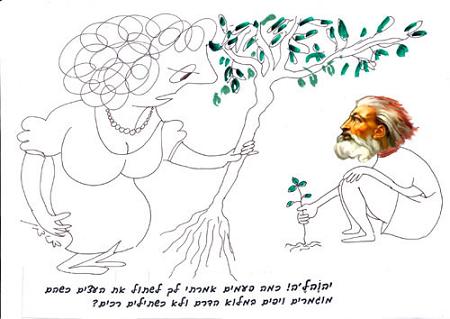
The early sages disagreed about the month in which the world was created. According to the sage Rabbi Eliezer it was in Tishrei, and according to the sage Rabbi Joshua it was Nissan. How did these sages know when the world was created? From studying the text. In the Torah it is written “Then G-d said, ‘Let the earth bring forth grass, the herb that yields seed, and the fruit tree that yields fruit according to its kind, whose seed is in itself, on the earth'” (Genesis 1:11). From the phrase “Let the earth bring forth grass” it is learned that this was the time when the earth sprouts grass, the month of Tishrei. From the phrase “the fruit tree” it is learned that the trees were full of fruit. When does this happen? Tishrei.
The sage Rabbi Joshua drew his conclusions from the verse “And the earth brought forth grass, the herb that yields seed according to its kind, and the tree that yields fruit” (Genesis 1:12). From the phrase “And the earth brought forth grass” he learned that the earth was full of grass as it is in Nissan, and from the phrase “the tree that yields fruit” he learned that the trees were beginning to yield fruit. When do the fruit trees bud? In Nissan.
The scholars asked: Each sage learned from a different verse and drew different conclusions on the question of when the world was created. How do these sages reconcile the two verses, since they do come from a single source, the Torah. Answer: The sage who learned that the world was created in Tishrei would explain the verse “the tree that yields fruit,” referring to the budding of the fruit trees, to be speaking of the future, when the trees G-d created would bud. How would the sage who holds that the world was created in Nissan explain the verse “the fruit tree,” which implies the trees were full of fruits? Answer: G-d created the trees complete and beautiful, in their full glory, and not as tender saplings; they were created as grown trees which could bear fruit.
(Babylonian Talmud, Tractate Rosh HaShanah 11a)
